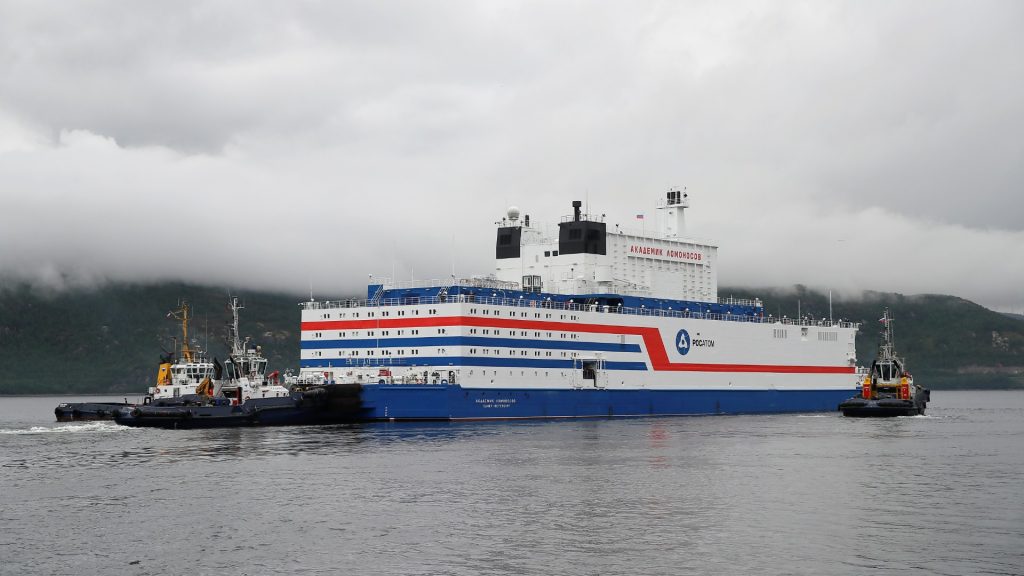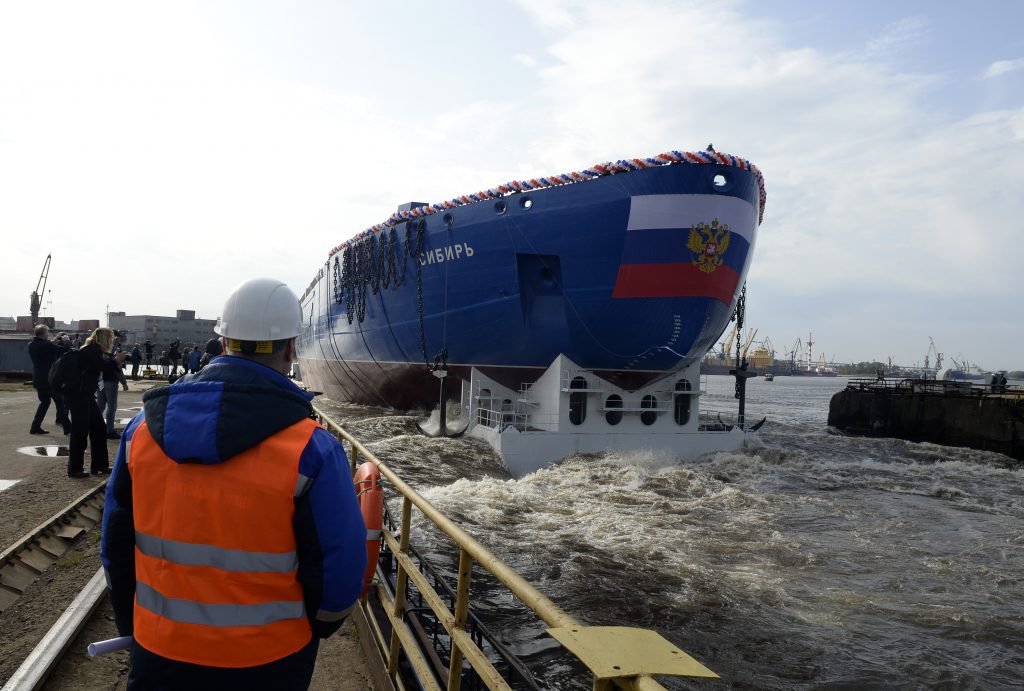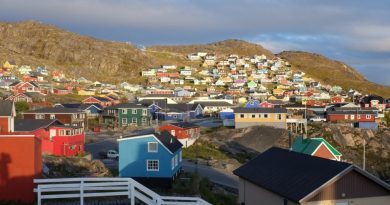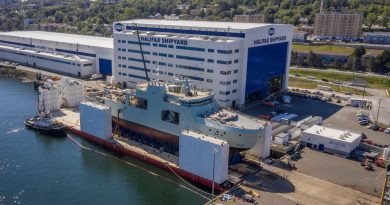Blog – Russia’s nuclear Arctic?

While much of the world’s attention has been focused on the escalation of the tense border situation between the Russian Federation and Ukraine in recent weeks, Moscow has continued its plans to develop its far northern regions, in preparation for growth in regional shipping and demand for oil and gas.
The government of Vladimir Putin continues to tout the importance of Russia’s Northern Sea Route (Северный морской путь) as an emerging artery for global maritime trade, especially as demand for fossil fuels may rebound depending on the trajectory of the global economy next year.
In 2020, sixty-four vessels made use of the NSR for cargo transits, up from thirty-seven the previous year. In September of this year alone, 33 ships reportedly traversed the route, and the Putin regime remains confident that it will be able to transfer thirty million tonnes of cargo using the NSR by 2030, (last year, that figure was 1.3 million tonnes). With ice levels in the Arctic Ocean continuing to erode each year due to climate change, Russia is banking on its Arctic energy resources, as well as metals, minerals, and rare earths, to play a greater role in the country’s economy, at a time when Moscow continues to face trade pressures from the West.
Big aspirations, sobering realities
The NSR will be central not only in delivering these resources to global markets but also in allowing the Russian Arctic to eventually become a commonplace secondary sea route between East Asia and Northern Europe. It was no coincidence that in March of this year, when the cargo vessel Ever Given became stuck in the Suez Canal, causing a major bottleneck in global shipping until it was freed six days later, that the Russian State Nuclear Energy Corporation, or Rosatom (Росатом), with extensive interests in the Northern Sea route, took the opportunity to advertise the NSR as a less accident-prone alternative.
However, the route remains far from being in a position to challenge traditional sealine like the Suez or the Malacca Straits, and the challenges of using the NSR were further illustrated when two dozen vessels became trapped in the waterway by an unexpected early freeze last month, forcing two Russian icebreakers, the Novorossiysk (Новороссийск) and the Vaygach (Вайгач) to participate in rescue operations.
In addition to the still-unpredictable weather patterns in the Russian Arctic, as well as ongoing challenges in balancing economic development and environmental concerns in the region, (as the Norilsk incident last year underscored), infrastructure is another major challenge facing any plans to fully develop both the NSR and the surrounding lands in Siberia and the Russian Far East (RFE), and element of Moscow’s drive to better utilise its Arctic assets has been the movement of nuclear components northwards.

The deployment of the vessel Akademik Lomonosov (Академик Ломоносов) to the Russian Arctic is the most visible example of the growing role of nuclear energy in the building up of NSR infrastructure projects. The ship, which acts as a waterborne nuclear power plant, is key to supplying energy to various facilities and projects along the NSR in preparation for increased sea traffic.
Despite initial scepticism about the viability of such a vessel, the ship nonetheless began operations in 2019, and this month was stationed in the town of Pevek (Певек) in the Chukotka Autonomous Okrug of the RFE. Pevek lies near promising deposits of base and precious metals, including gold, but its isolation required an external energy source for mining to take place. Rosatom is now looking at the next phase [in Russian] of these types of vessels, and plans were reported [in Russian] to build five more such ships to assist with extractive industries along the NSR. Such ships could also be sold to other governments.
At issue, however, is whether floating nuclear power plants can be a safe provider of energy to the Russian Arctic, given the extreme conditions in the region, and whether the economic benefits of developing resources and opening shipping in the NSR is worth the risk of using such ships. Critics, including from Greenpeace, have argued that an accident would be devastating for the Arctic, and that there remain questions about how spent fuel would be stored and whether these plants will also contribute to further environmental degradation of the Arctic by supporting further oil and gas drilling. Moreover, Russia, (and the Soviet Union before it), has at best an imperfect record regarding nuclear safety. In August 2019, a radioactive explosion, under unclear circumstances, took place at a military site in Nyonoksa (Нёнокса), in the Arkhangelsk Oblast, which resulted in seven casualties.
International concerns
The Akademik Lomonosov is hardly the only nuclear vehicle in Russia’s far north, as the country has also sought to expand its fleet of nuclear-powered icebreakers also in anticipating of increased demand for the NSR. At present, five out of the country’s fifty or so icebreakers are nuclear powered, with the latest being the Arktika (Арктика), and the Putin government has called for that number to rise to nine by 2035. Russia is the only country to operate nuclear-powered icebreaking ships, although China had expressed interest in building their own such vessel, and is also seeking to develop heavy icebreakers [in Chinese] for anticipated use of the NSR.
Russia’s advances in this area has caused much consternation in the United States, (including fears of an ‘icebreaker gap’), given that the US Coast Guard only has one (barely) operational heavy icebreaker, the Polar Star, and the deployment of its first replacement Polar Security Cutter [pdf] is now facing delays.
Concerns have also been raised about how nuclear materiel may factor into Russia’s ongoing interests in building up its military capabilities in the Arctic. The Putin government has frequently framed such activities as necessary from a defensive viewpoint, given Russia’s long Arctic coastline and the need to monitor it, especially as more ships are expected to operate within the NSR. Nevertheless, reports in April this year of the testing of a nuclear powered stealth torpedo, the Poseidon (Посейдон) 2M39, as well as updates to its Northern Fleet policies have called into question whether Moscow’s Arctic strategies are purely defensive in nature.
As an April 2020 report [pdf] concluded, the ongoing additional of new nuclear materials into the Arctic has not only had effects on regional security thinking, including amongst the other Arctic governments, but it has also increased the threat of an accident leading to catastrophic damage to the marine environment and local populations.

As well, one of the Working Groups within the Arctic Council, on Emergency Prevention, Preparedness and Response (EPPR), published a study [pdf] in January this year which outlined the dangers of nuclear contamination from a variety of sources, including from nuclear powered ships, waste storage facilities, and floating nuclear power plants. Many scenarios involving nuclear accidents in the Arctic were judged to be low risk, however the risks of an accident involving either a nuclear-powered vessel or a waterborne nuclear power plant were judged as ‘moderate’ and increasing. Much will depend, however, on what (and how many) nuclear materials are further introduced in the region in the future, what safety protocols are in place to accommodate them, and whether any sort of Arctic nuclearisation can ever truly be safe.
This month, it was announced that five Norwegian Coast Guard ships would begin to carry drones designed to detect radiation in the Arctic Ocean, primarily as a response to the rising number [pdf] of nuclear-powered vessels and reactors Russia has deployed to its Arctic waters. The Norwegian Directorate for Civil Protection (Direktoratet for samfunnssikkerhet og beredskap / DSB), also detailed an exercise, Arctic REIHN 2022, which will be held in Bodø in May of next year to simulate an emergency response to a radiation accident. Despite Russia’s nuclear ambitions having a focus on domestic economic and political benefits, its decisions regarding polar nuclear usage are now beginning to have serious effects across much of the Arctic.



